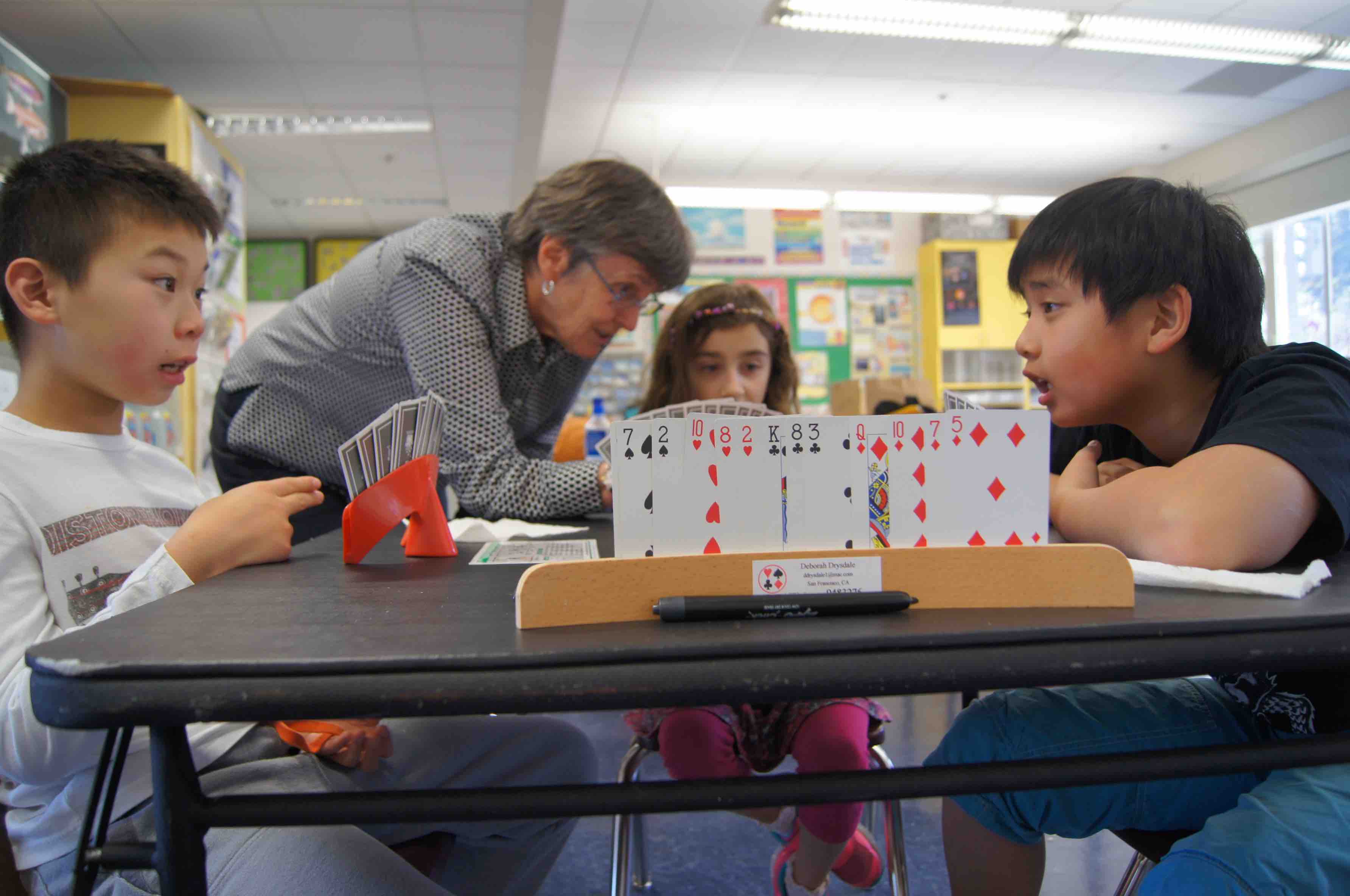Hands: A Bridge to Bridge
 A challenge Center for Bridge Education (CBE) has faced is how to get a newcomer started because there is so much to learn before one can play a hand. This is particularly true with younger players with short attention spans. School children who join a bridge club have not made an informed decision about the commitment that bridge traditionally requires. Having seen how traditional methods of teaching bridge lose half the class on the first day, former CBE President Richard Bellerose sought to invent a new game that enables beginners to start playing within a few minutes.
A challenge Center for Bridge Education (CBE) has faced is how to get a newcomer started because there is so much to learn before one can play a hand. This is particularly true with younger players with short attention spans. School children who join a bridge club have not made an informed decision about the commitment that bridge traditionally requires. Having seen how traditional methods of teaching bridge lose half the class on the first day, former CBE President Richard Bellerose sought to invent a new game that enables beginners to start playing within a few minutes.
Hands, focuses on play, starting players at a basic level, focusing on trick taking and simplified scoring. Players decide on their own when to progress to the next level, and we know by seeing how video games lure participants that each player is eager to progress. Third graders might play 24 hands at each level before progressing; adults might play only 3-4 deals before moving on. Move when ready.
The game has eight levels, and each time a level is understood, the players can move to the next level. At the lowest level, players know the exact distribution and point count of each hand. This gets them thinking about who has what cards and how to make the most of each hand. They learn about finesses, cooperation with partner on defense, transportation, and much more. As they progress, rules become more detailed, the information becomes more limited, and the inferences more difficult.
As new players master the levels, concepts that lead to bidding are introduced. When they are comfortable with the eighth level, they can continue to play Hands as a stand-alone game, but we think most will go on to learn bidding—i.e., bridge.
Learning the bidding is easier when the goals of the ideal contract and the information one needs to share with partner are clearly understood. Furthermore, a declarer who knows how to plan a hand is far more likely to bring home a 25 point game. There’s no point to good bidding that is followed by lousy play.
Hands is currently in alpha testing at CAIS and a few adult homes.
The goal of this project is to get Hands implemented on-line, but for testing and analysis, we are playing this at bridge tables. A full description of the game will soon be available at center4bridge.org.
